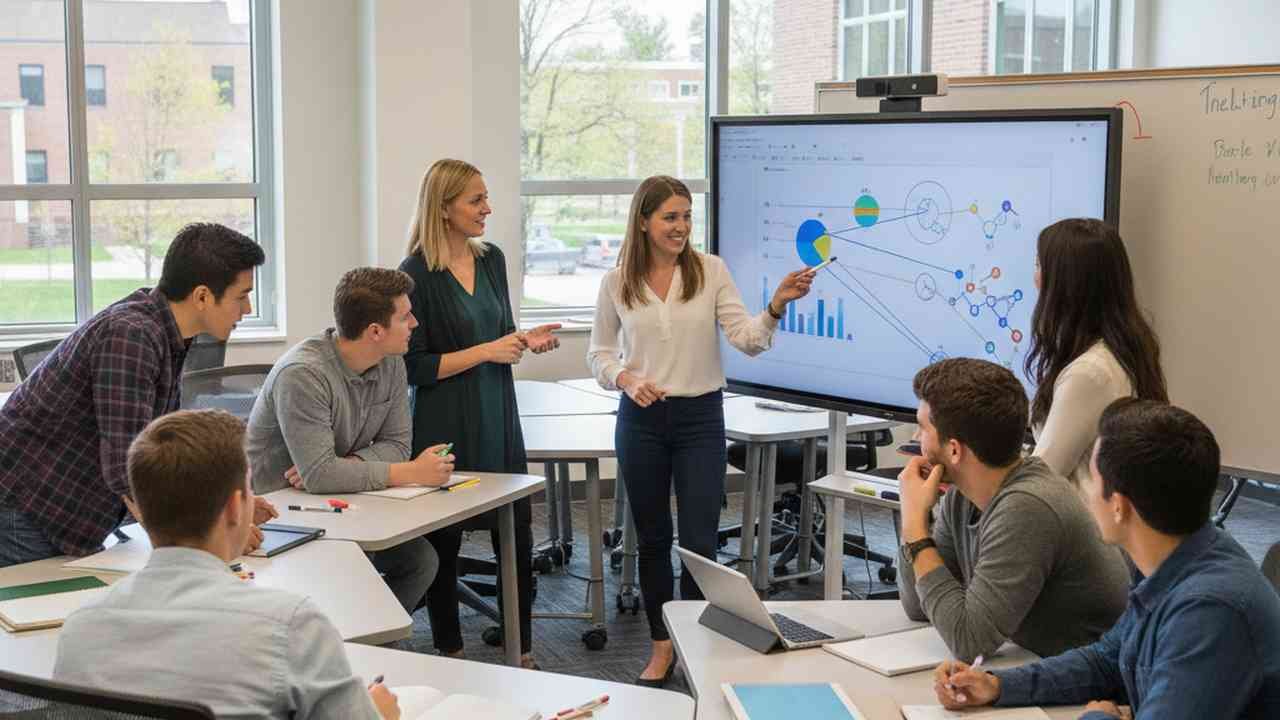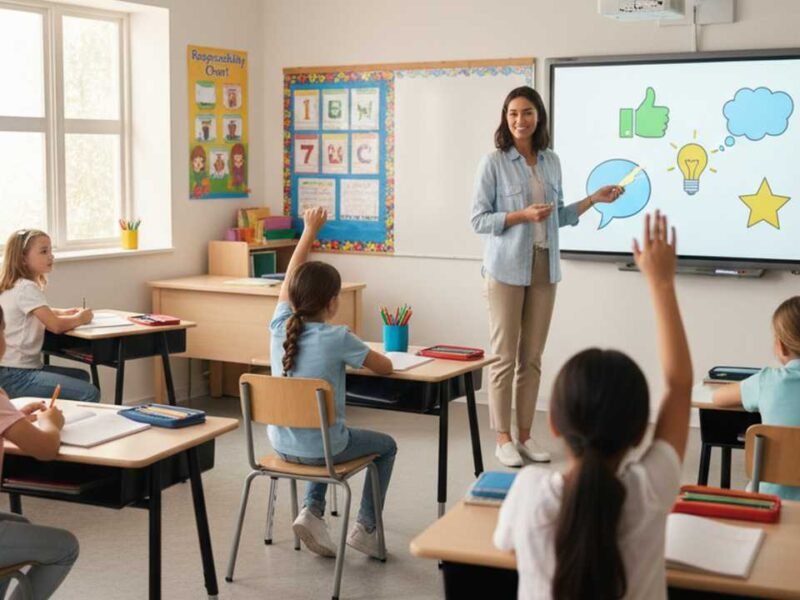In the ever-evolving landscape of education, the urgency to captivate students’ attention has never been more pressing. The classroom, once a sanctuary of knowledge, now competes with the allure of digital distractions and the pull of social media. Educators are on the frontlines, striving to rekindle that spark of curiosity and passion for learning. But how can they achieve this amidst the noise? The answer lies in a paradigm shift – viewing each lesson through the lens of an educational insights telescope, focusing on strategies that not only engage but also inspire and empower students.
Understanding the Dimensions of Student Engagement
Student engagement is a multifaceted construct encompassing behavioral, emotional, and cognitive dimensions. Behavioral engagement refers to students’ participation in academic, social, or extracurricular activities. Emotional engagement pertains to students’ feelings of belonging and interest in the learning process. Cognitive engagement involves the investment in learning, the willingness to exert the effort necessary to comprehend complex ideas and master difficult skills. Recognizing these dimensions allows educators to tailor their approaches, ensuring that every student finds a pathway to connect with the material. By integrating strategies that address all three dimensions, teachers can create a dynamic and inclusive learning environment that resonates with every student.
Creating a Welcoming and Stimulating Classroom Environment
The physical and emotional atmosphere of the classroom plays a pivotal role in student engagement. A cluttered, uninspiring space can stifle creativity and motivation. In contrast, a well-organized, vibrant classroom invites exploration and fosters a sense of ownership among students. Incorporating elements such as flexible seating arrangements, interactive displays, and student-created content can transform a mundane room into a hub of activity and enthusiasm. Moreover, establishing a culture of respect and inclusivity ensures that all students feel valued and are more likely to participate actively in the learning process. This environment serves as the fertile ground where engagement can take root and flourish.
Leveraging Technology to Enhance Learning Experiences
In the digital age, technology is not merely a tool but a gateway to innovative learning experiences. Interactive platforms, educational apps, and virtual simulations can bring abstract concepts to life, making learning more tangible and engaging. For instance, using augmented reality to explore historical sites or conducting virtual science experiments can captivate students’ imaginations and deepen their understanding. However, it’s crucial to strike a balance; technology should complement, not replace, traditional teaching methods. When integrated thoughtfully, technology can serve as a powerful catalyst for student engagement, providing diverse avenues for exploration and expression.
Incorporating Active Learning Strategies
Passive learning, characterized by lectures and rote memorization, often leads to disengagement. Active learning, on the other hand, involves students in the process of learning through activities that require them to apply, analyze, and synthesize information. Techniques such as group discussions, problem-solving tasks, and peer teaching not only enhance understanding but also encourage collaboration and critical thinking. By shifting the focus from teacher-centered instruction to student-centered learning, educators can foster a more dynamic and participatory classroom environment, where students take ownership of their learning journey.
Building Strong Teacher-Student Relationships
At the heart of student engagement lies the teacher-student relationship. When students feel respected, understood, and supported by their educators, they are more likely to invest emotionally and cognitively in their learning. Building rapport involves more than just being approachable; it requires active listening, empathy, and genuine interest in students’ well-being and aspirations. Regular one-on-one interactions, personalized feedback, and encouragement can strengthen these bonds, creating a safe space where students feel confident to express themselves and take academic risks. Such relationships are instrumental in sustaining long-term engagement and fostering a love for learning.
Designing Relevant and Meaningful Curriculum
Students are more likely to engage with content that resonates with their interests, experiences, and future aspirations. Designing a curriculum that connects academic concepts to real-world applications can make learning more relevant and meaningful. For example, integrating current events, community issues, or career pathways into lessons can help students see the practical value of their education. Additionally, offering choices in assignments and projects allows students to pursue topics they are passionate about, further enhancing their investment in the learning process. A curriculum that speaks to students’ lives and futures can ignite curiosity and drive engagement.
Implementing Formative Assessment Techniques
Assessment is not just a tool for measuring student learning; it is an integral part of the learning process itself. Formative assessments, such as quizzes, polls, and reflective journals, provide immediate feedback to both students and educators. This ongoing feedback loop helps identify areas of strength and areas needing improvement, allowing for timely interventions and adjustments to teaching strategies. Moreover, formative assessments can empower students to take charge of their learning, setting goals and monitoring their progress. When assessments are viewed as opportunities for growth rather than mere evaluations, students are more likely to engage actively and persistently in their learning endeavors.
Encouraging Student Autonomy and Voice
Empowering students to take ownership of their learning fosters a sense of responsibility and intrinsic motivation. Providing opportunities for student choice in assignments, projects, and learning pathways allows them to pursue areas of personal interest and strength. Encouraging student voice through class discussions, surveys, and feedback mechanisms ensures that their perspectives are valued and considered in decision-making processes. This autonomy not only enhances engagement but also cultivates critical thinking and problem-solving skills, as students learn to navigate their educational journeys with confidence and purpose.
Fostering a Growth Mindset Culture
Students’ beliefs about their abilities significantly influence their engagement and achievement. Cultivating a growth mindset – the belief that abilities and intelligence can be developed through dedication and hard work – can transform students’ approach to challenges. Encouraging effort, perseverance, and resilience in the face of setbacks fosters a positive attitude toward learning and risk-taking. Celebrating progress and learning from mistakes rather than focusing solely on outcomes promotes a culture where mistakes are viewed as opportunities for growth. A growth mindset not only enhances engagement but also prepares students to navigate the complexities of the modern world with confidence and adaptability.
In conclusion, promoting student engagement is not a one-size-fits-all endeavor but a dynamic and multifaceted process that requires intentionality, creativity, and empathy. By adopting strategies that address the diverse needs and aspirations of students, educators can create an environment where learning is not only effective but also inspiring and transformative. The journey toward enhanced student engagement begins with a single step – viewing each lesson through the educational insights telescope, focusing on the strategies that will make the most significant impact. Don’t let this opportunity slip away; the future of education depends on the engagement we cultivate today.


